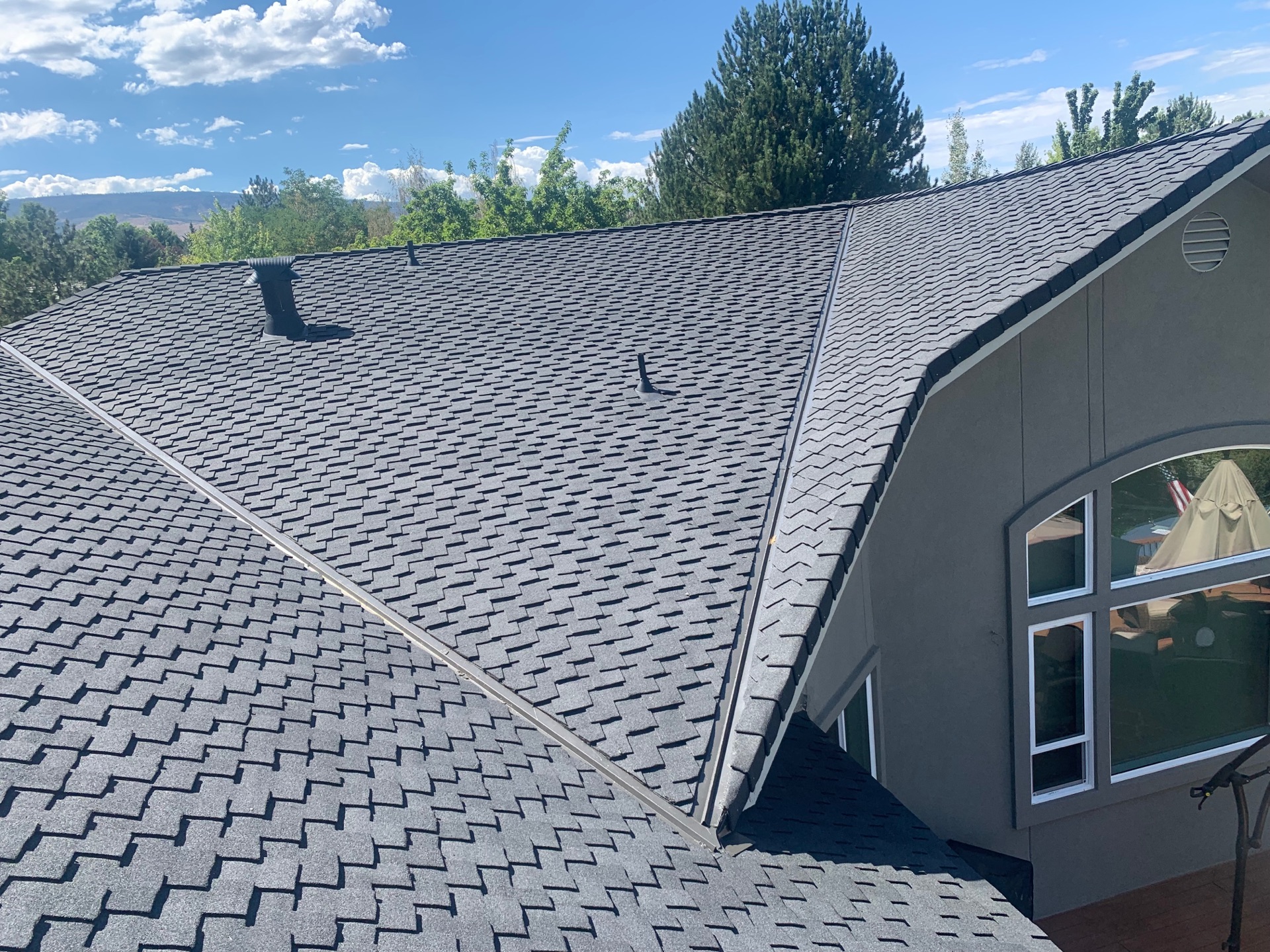A Comprehensive Consider Roofing Companies Gainesville Citizens Recommend
A Comprehensive Consider Roofing Companies Gainesville Citizens Recommend
Blog Article
Ideal Practices for Ensuring Appropriate Roofing Air Flow
A well balanced intake and exhaust air vent proportion, frequently 1:300, plays a crucial function, with intake vents preferably placed at the reduced edge of the roofing system for cool air access and exhaust vents at the optimal for cozy air leave. Maintaining insulation away from vents is critical to avoid airflow limitation.
Understand Ventilation Fundamentals
Properly recognizing ventilation basics is necessary for guaranteeing the durability and efficiency of roofing systems. Effective air flow alleviates moisture buildup and temperature level extremes in the attic, both of which can result in substantial structural damages with time. A well-ventilated roof covering helps in protecting against usual problems such as mold growth, timber rot, and ice dams, which can jeopardize the stability of the roof covering materials and the underlying structures.
The primary objective of ventilation is to facilitate the motion of air, permitting for a constant exchange in between the indoor and outside atmospheres. This balance is achieved with a combination of consumption and exhaust vents that collaborate to preserve optimum airflow. Intake vents, normally located along the eaves or soffits, allow fresh air to enter the attic space, while exhaust vents, often positioned at or near the roof covering ridge, allow warm, damp air to run away.
Trick factors influencing the efficiency of roofing system air flow include correct placement, appropriate sizing, and ensuring that both intake and exhaust vents are unblocked. Regular inspection and upkeep are crucial to identify possible obstructions, damages, or ineffectiveness in the ventilation system, thus safeguarding the roof's performance and durability.
Sorts Of Roofing Vents
Roof vents play an important function in keeping effective attic air flow and, by extension, the overall wellness of the roof covering system. Different sorts of roofing system vents are offered, each with unique advantages tailored to particular roof requirements. Ridge vents, for instance, are set up along the roof covering's peak, allowing cozy, moist air to get away from the attic room. They provide constant ventilation and mix effortlessly with the roofline, making them both efficient and visually pleasing.

Soffit vents are installed under the eaves and work in tandem with roof vents to guarantee a balanced consumption and exhaust system. By permitting cooler air to enter from below, soffit vents facilitate the expulsion of warm air through upper vents. Gable vents, located on the exterior walls of the attic, deal another effective option, specifically in homes with saddleback roofs.
Evaluate Your Existing Air Flow

Next, take into consideration the age and condition of your roofing materials and ventilation components. Older systems may not follow current building regulations or may have deteriorated gradually, minimizing their performance. Conduct a comprehensive evaluation to recognize any indicators of wear and tear, such as corrosion, damage, or voids that could compromise the system's performance.
Additionally, determine the attic temperature and humidity degrees. High temperature levels and humidity can suggest insufficient ventilation.
Installation Best Practices
Efficient setup of roofing air flow systems is vital for guaranteeing ideal performance and durability. Appropriate setup starts with recognizing the specific ventilation needs of the roof and the structure it covers. This includes computing the proper ratio of consumption to exhaust vents, normally adhering to the 1:300 guideline, which stipulates one square foot of ventilation for every single 300 square feet of attic floor space.

Intake vents need to be installed at the roofing system's lower side, typically in the soffits, to permit amazing air to get in. Exhaust vents, on the other hand, ought to be installed near or at the roof's height to facilitate the departure of cozy, damp air.
Seal all air vent links diligently to avoid air leaks and potential water seepage. Usage high-grade products and follow supplier standards to make certain longevity and performance. In addition, incorporating ridge vents with baffles can substantially improve air movement efficiency by stopping wind-driven rainfall and snow from getting in the attic room.
Eventually, specific installation of roofing air flow systems minimizes potential concerns such as mold development, ice dams, and structural damage, guaranteeing the roof covering's stability and the building's general wellness.
Regular Maintenance Tips
Uniformity in upkeep practices is basic to ensuring the lasting effectiveness of roof covering air flow systems. During these site here inspections, guarantee that vents are cost-free of debris, nests, and various other obstructions that might hinder airflow.
Utilize a soft brush or a vacuum to remove dirt and debris from consumption and exhaust vents. Be cautious not to harm the air vent screens or louvers during the procedure.
Correct insulation is equally important. Guarantee that attic room insulation does not block the vents, as this can severely limit air movement. Reposition or change it to maintain an effective barrier. if any insulation has moved or resolved.
Lastly, replace any damaged or missing out on components promptly. Busted vents, split shingles, or shabby flashing can all add to poor ventilation and needs to be dealt with without hold-up. Normal upkeep guarantees that the roofing ventilation system operates optimally, thereby prolonging the life expectancy of the roof itself.
Verdict
Making sure correct roof air flow is critical for preserving the effectiveness and durability of a roofing system. Adherence to the 1:300 consumption and exhaust vent proportion, coupled with the calculated placement of vents, is crucial.
A well balanced consumption and exhaust vent see this page proportion, frequently 1:300, plays a pivotal function, with intake vents preferably placed at the lower edge of the roofing system for great air entrance and exhaust vents at the peak for cozy air leave. Consumption vents, commonly located along the soffits or eaves, allow fresh air to enter the attic room space, while exhaust vents, often situated at or near the roof covering ridge, make it possible for hot, damp air to escape.
Soffit vents are mounted under the eaves and job in tandem with roofing vents to guarantee a well balanced consumption and exhaust system. By permitting cooler air to go into click this link from below, soffit vents promote the expulsion of warm air with top vents. Adherence to the 1:300 consumption and exhaust air vent proportion, coupled with the strategic positioning of vents, is crucial.
Report this page